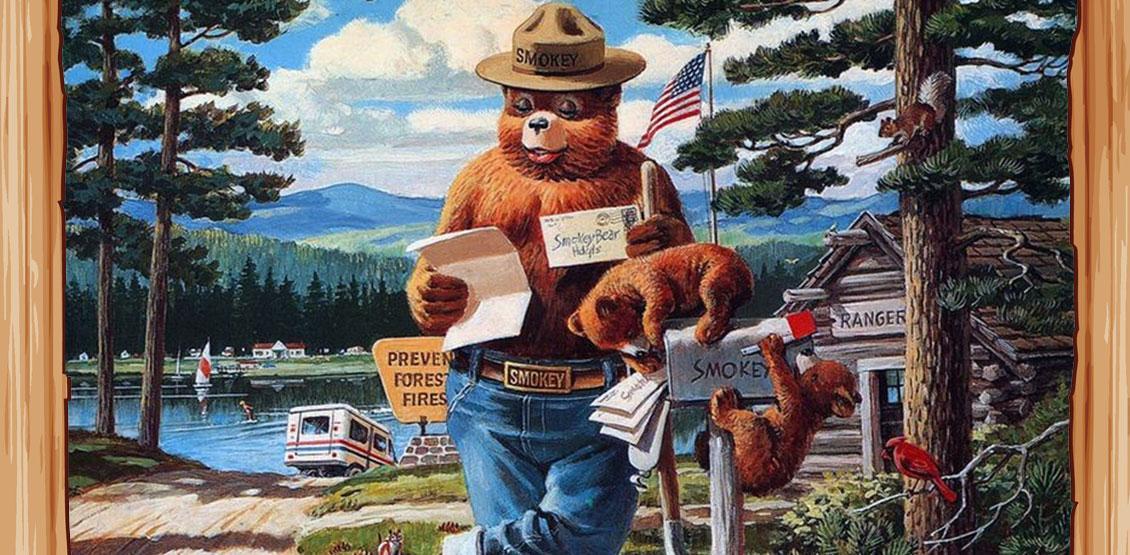Addresses in the United States used to be a simple matter of a street location, a city and state, and perhaps a city-specific postal zone. But by the 1960s, between massive increases in mail volume and the advent of computerized scanning and sorting equipment, the U.S. Postal Service needed a strategy to automate and speed up delivery. The result was the Zone Improvement Plan, or ZIP code for short, and it has since become a model for the world’s postal codes.
At Service Objects we make part of our living resolving and geolocating addresses, including their ZIP codes, so we thought you might enjoy discovering some of the history – and idiosyncrasies – behind those numbers at the end of your mailing addresses.
A ZIP Code Entertainment Spectacular
When ZIP codes were first introduced in 1963, their use wasn’t mandatory. (And believe it or not, still isn’t.) So to help convince people to switch from their old address formats, the U.S. Postal Service commissioned a 15-minute long educational film led by musical group The Swingin’ Six. It featured music, comedy, and even romance, juxtaposed with a leaden-faced appearance from the Postmaster General of the United States.
Here it is, preserved for posterity on YouTube. As a disclaimer, we take no responsibility if you can’t get their songs out of your head.
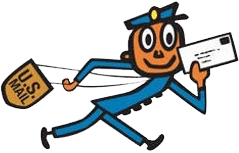
In keeping with a tradition of using cartoon characters to raise social awareness (think, for example, Popeye getting children to eat their spinach), the Post Office also commissioned an artist to create their new mascot: Mr. ZIP. In character form, he signified a new generation of speed and accuracy.
Can a Person Have Their Own ZIP Code?
The answer is yes – but only if you are the President of the United States or the First Lady. The POTUS’s ZIP+4 code is 20500-0001, while the FLOTUS is 20500-0002. Both are subsets of the White House’s dedicated ZIP code of 20500, which also has +4 codes for its postal station and Greetings Office. (You can actually look these up on the USPS ZIP code search page for 1600 Pennsylvania Avenue in Washington D.C.).
The one other example of an individual with their own ZIP code happens to be U.S. Forest Service mascot Smokey Bear. Between his popularity as an advertising icon and interest in the real live Smokey (an orphaned bear cub rescued from a 1950 forest fire) at the National Zoo in Washington D.C., he received so much mail that he was granted his own ZIP code of 20252. Although this ZIP code was eventually decommissioned in 1993, it was recently brought back by popular demand, as he still gets letters from children across the US.
Further up North, one other individual sharing this honor is Santa Claus, who fittingly has the Canadian postal code of H0H 0H0. No such luck in the US however, where letters to Santa go to the actual town of North Pole, Alaska and its ZIP code of 99705.
The ZIP Code That Got Swallowed Up
Somewhere in central Pennsylvania – off I-80, nestled between the Pilot Travel Center and the local Walmart – is the little town of Conyngham, PA. Better known as the town that was swallowed up by another ZIP code. You see, Conyngham and its roughly 2000 residents, with a ZIP code of 18219, is completely surrounded by the Sugarloaf, PA ZIP code of 18249, as shown in the image below.
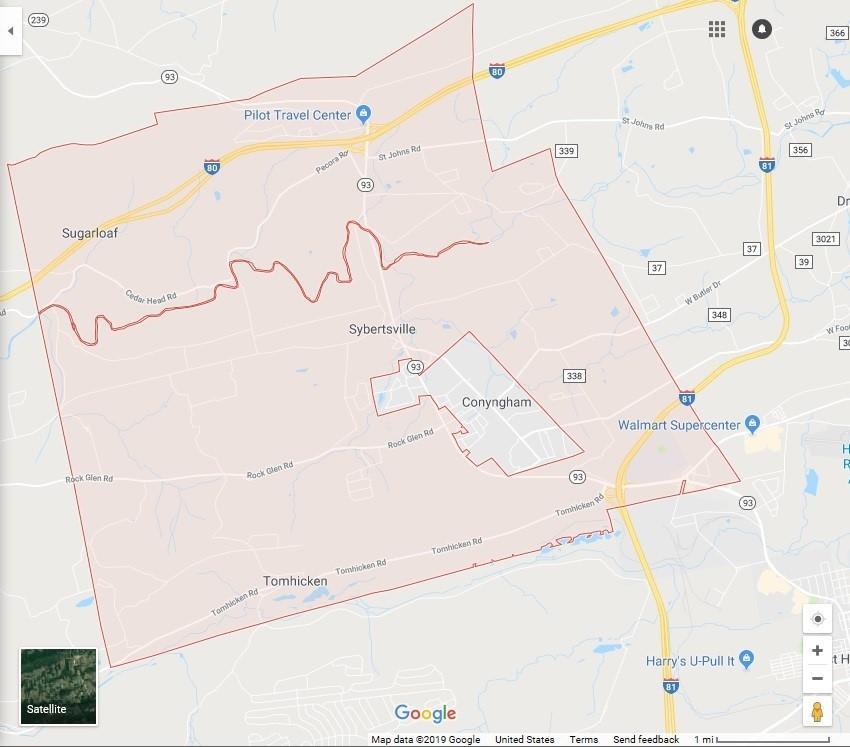
(Image courtesy Google Maps)
In fairness, Sugarloaf’s ZIP code is further divided by ZIP+4 codes into four separate regions within the 18249 ZIP code. But poor Conyngham is still surrounded. And some poor homeowner is probably trying to explain to an insurance agent that even though she lives WITHIN the 18249 ZIP code, she doesn’t live IN it.
This situation can also occur at a street level, which is in fact surprisingly common: a street-assigned ZIP code may extend into an area where this street is surrounded by a different ZIP code. So a different ZIP code may be as close as your backyard neighbor!
Situations like these may sound humorous, but as this article points out, they can have a real impact on people’s lives. Issues such as insurance rates, voter registration, and jury duty can be affected, as well as more serious concerns such as emergency response – not to mention a possible loss of status and property value when your home is in one neighborhood but your ZIP code is in another. In response to these concerns, the USPS now has a mechanism for reviewing ZIP codes on a case-by-case basis.
Those Numbers Actually Mean Something
ZIP codes aren’t just assigned at random: each digit has a specific function. The first digit, from 0 to 9, places a mailing destination in one of ten broad mailing regions of the United States. The next two digits narrow down this destination to a central Post Office for a smaller region such as a city. Finally, the last two digits defines the destination further to a local Post Office.
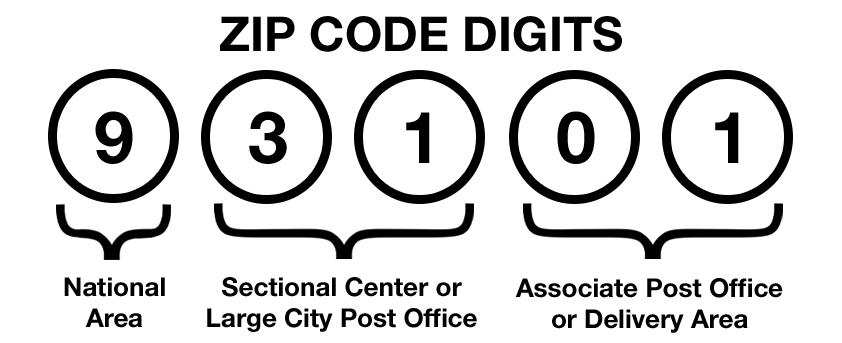
So-called ZIP+4 codes refine the destination further, with the last four digits signifying data ranging from a PO Box number to a floor within a building.
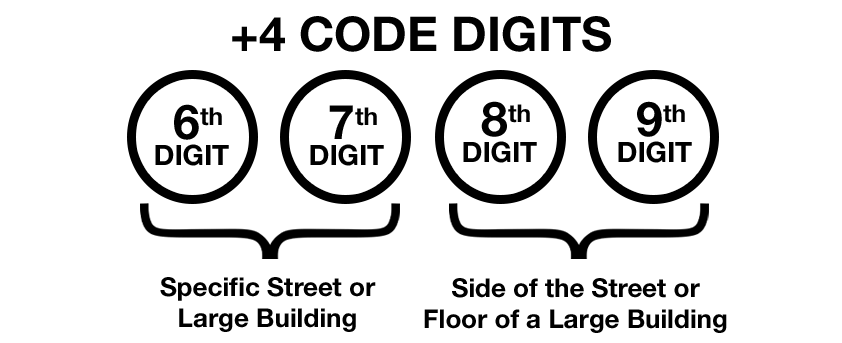
Some entities are so large or specialized that they have their own ZIP code, including the Empire State Building, Dodger Stadium, the CIA, and New York’s LaGuardia Airport.
Putting More ZIP in Your Contact Data
As you have probably learned from this article, determining ZIP codes and their corresponding locations isn’t for the faint of heart. But fear not, we can help. Our DOTS Address Validation – US service helps correct and complete US addresses down to the ZIP code level, and our DOTS Address Geocode service provides accurate latitude and longitude coordinates for geographically-based applications ranging from insurance rates to home values. Contact us anytime, and we’ll respond faster than Mr. ZIP!

